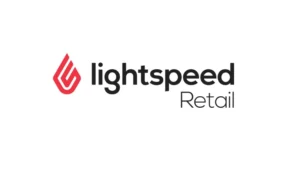Did you know that the average cost of an ERP implementation for a mid-level business is between $150,000 and $750,000? Not only is that a huge cost range, but it’s also a significant budget to plan, manage, and allocate effectively.
Of course, the actual cost will depend on a range of factors, including the size of your company, the number of customizations, training costs, and more.
So, how do you budget for projects like this that might be on your technology roadmap and ensure your spending stays on track? This guide will take you through the process of IT roadmap budgeting and show you how to strategically plan your finances.

Estimate Your Software Costs
The easiest step in planning your technology roadmap budget is getting quotes for new software subscriptions and hardware (new laptops, computers, screens, etc.). Although it takes time to get multiple quotes from different providers, it’s worth it to ensure you’re getting the best service for your budget.
Don’t forget to add the cost of new users, managers, and training for any software upgrades you may have. Find out if training and support is included in the software package.
Did you know that StackPlan has a directory of software analysts who will help you find the right software solutions for your business?
Budget for Implementation Expenses
Once you have a list of your software and hardware prices, it’s time to look at your implementation expenses. You’ll need to dedicate funds for configuration, training, and the final rollout.
There isn’t a standard budget for this part of the process, and it will depend on the size of the project and the level of complexity involved.
If you’re struggling to figure out a reasonable budget, we can connect you with vetted implementation consultants who will help you understand your costs. They have extensive experience in software implementation, so they can help you budget for implementation expenses much more effectively than you could alone.
Incorporate Multi-Year Subscription Costs
Saas/PaaS budgets should grow annually with increased user counts. What you’re paying for software this year won’t be the same next year – so forecast additional storage, bandwidth, and user expenses over time and factor that into your budget now.
Some software comes with significant jumps in pricing tiers, and you don’t want to be hit with a surprise bill next year when your business has outgrown its current tier.
Build in Contingency Funds
No matter what kind of project you’re undertaking, you should have a 10-20% contingency for unplanned purchases or overruns. Because you’re operating on forecasts, this allows you to offset risks from unknowns and keep your project on track if you run into challenges.
Only around 64% of SMBs have some form of contingency plan in place for cashflow problems, which means 36% of businesses are left unprotected.
Validate Costs with Vendors
Research shows that SMBs spend $337 billion on managed technology or IT services each year – that’s around a quarter of all SMB IT spending.
Many business owners make the mistake of using the pricing structures listed on vendor websites, but these are probably generic guides that may not apply to your service needs.
Instead, contact each of your shortlisted partners and discuss tailored quotes for their software. You might be able to negotiate discounts or additional services for multi-year commitments or a certain amount of software licenses.
Although this takes more time, it’s worth getting tailored quotes that show specifically what you’ll be paying moving forward.
Create a Separate Budget Per Project
You probably have an annual budget for tech projects – the average SMB spends between $10,000 and $49,000 annually on technology.

But you need to create separate budgets for each project you have planned in your technology roadmap.
Track costs by individual line items to ensure you’re not going over budget, and then roll them up to see a total annual tech spend projection.
When you’re working with one large tech budget, it’s easy to overspend. By breaking your budget down into projects and line-by-line costs, you’ll have a firmer grasp on your finances.
Get Funding Approval
Once you have a budget mapped out, seek alignment from the CFO/CEO/owner on your forecasted numbers. It’s important that your predictions aren’t optimistic, so getting this approval shows you have a realistic budget for your technology roadmap.
You also need to secure buy-in for ongoing capital allocation. Your roadmap will require additional funding as your company grows and hits key milestones, so ongoing capital injections are crucial for success.
The clearer your budget for your roadmap, the easier it will be to secure approval. Highlight the ROI for each tech project and be specific about where funds are utilized.
Get Expert Help With Tech Roadmap Budgeting
Creating an effective, accurate budget for your tech roadmap not only ensures your projects run smoothly but also builds credibility and helps you secure ongoing funding from decision-makers.
If you want to develop a highly accurate, well-allocated budget, get in touch with one of the software consultants in the StackPlan Directory.
They’ll give you key insights into the real costs of software subscriptions, implementation costs, and training budgets. You’ll also receive professional guidance on planning your technology roadmap projects and allocating your funding in the most strategic way possible.
Need Help Evaluating
your Current Inventory Systems?
Visit our directory of software consultants in the StackPlan Consultant Directory. Vetted consultants are ready to support your business needs.








